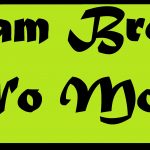Why loud noise is bad for your heart?
High-decibel noise more than doubles your odds for ticker troubles. People who live near airports get blood pressure spikes whenever a plane flies overhead at night. Roaring traffic has a similar effect. On the job, constant noise boosts stress hormones and makes your arteries tighten, increasing your risk for chest pains, heart attack, heart disease and high blood pressure, according to a recent study. You’re especially vulnerable if you’re under 50, male or a smoker.
High-rated foam plugs work just as well as protective headsets if you’re only dealing with occasional bursts of noise, and you won’t look like a bush pilot bringing in your snow blower for a landing. Buy foam plugs with a noise reduction rating (NRR) of 33; they’ll block out about 15 decibels of noise, on par with headsets.
New research has found that regular exposure to sound above 65 decibels (that’s merely a loud conversation) can up the risk of a heart attack by 10%. Chronic exposure to louder noise from a hair dryer or vacuum cleaner, for example bumps heart attack risk by 20%, and constantly being around anything on par with a garbage disposal (common in many factories) increases the risk by 50%.
What’s the link between loud noise and heart damage? Relentless racket activates your nervous system and increases stress levels, which throws off your heart rate, blood pressure, bad cholesterol and blood sugar, increasing heart attack risk. Constant clatter has also been linked to cognitive impairment, sleep problems and tinnitus (persistent ringing in your ears).
The rise of Silent Disco

Quiet Parties is believed to have been created in 2002 by artist Paul Rebhan and musician Tony Noe, two friends who visited several bars in New York City in an attempt to have a conversation, only to find they could not hear each other speak at any bar because of loud music and loud talking. This experience prompted them to invent the concept of ‘silent nightclubbing’.
The first Quiet Party probably occurred in October, 2002 in New York City, and spread to other cities including San Francisco, Washington, Houston, Paris, London, Berlin, Barcelona and Beijing.
The phenomenon is known as quiet clubbing. It’s a growing trend in big cities where noise ordinances and other limitations have encouraged club-goers to get creative. In New York City, thousands of people head out to silent discos each week, put on their headphones, and just dance.
It’s now on the Philippines

We were able to experience the very first Silent Disco in a festival here in the Philippines via Malasimbo Festival 2015 in Puerto Galera. Sponsored by Tangram Philippines, ravers don headphones and dance noiselessly to the live music they are listening to. Tangram’s prized headphones, which are available up to three channels, can receive only FM radio frequency signals from its dedicated transmitters.



